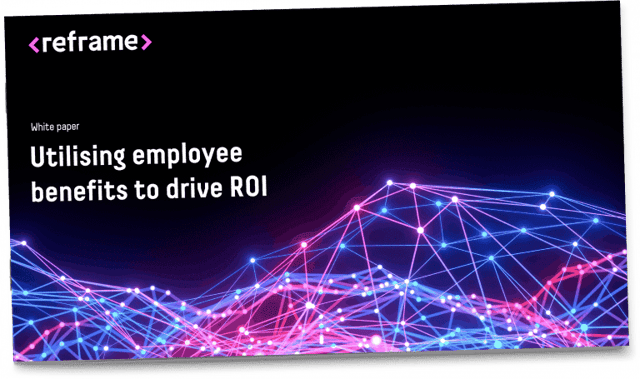Benefits of diversity and inclusion in the workplace
Diversity and inclusion in the workplace creates a sense of community where employees can perform to their full potential no matter their background, identity, or circumstances.
It enables employees to feel supported and valued as individuals, instilling greater trust between them and your business leaders. A sense of belonging, feeling valued and having trust are fundamental components that contribute to overall employee wellbeing.
Recognised by McKinsey as key to higher performance, diversity and inclusion (D&I) has proved to be the bedrock of successful businesses. To be truly effective, D&I must be an integral part of everything you do as an employer and everything your employees touch. That includes your employee benefits.
Why is D&I important in employee benefit design?
While many organisations are aware of the importance of D&I, our research found that only 27% of HR expect their D&I agenda to influence benefit design, rising to 37% for large organisations*.
Delivering inclusive employee benefits starts with the individuals in your workforce. By putting them at the centre of your benefits scheme you can focus on what they actually need. It also helps you to recognise and keep up with societal changes, evolving family structures and changes in employee expectations.
If you are creating or reviewing your benefits scheme, ask yourself if it reflects your entire workforce. Consider your workforce in terms of gender, race, nationality and sexual orientation – do your benefits support their diverse needs and enable you to adopt an inclusive workplace culture?
Delivering inclusive employee benefits for all
One of the challenges of instilling diversity and inclusion is the differing wants and needs of a multi-generational workforce. If not addressed, employers risk their employee benefits becoming underused and undervalued. Areas to consider include:
- How many employees will work past retirement age or are planning to get on the property ladder?
- Can you flex your benefits so employees can access them as and when they need?
- Can you expand the cover of health-related benefits to include dependents and family members?
- Does your benefit scheme extend across employees’ life stages?
- Does your benefit scheme reflect all types of modern families?
In the last year the pandemic, remote working and isolation have triggered demand for new kinds of support. Many employees have had to take on a disproportionate share of family or home duties. They may be juggling work with childcare or caring responsibilities, they may be living with a chronic health condition or awaiting a diagnosis.
As a progressive and inclusive employer, you need a benefits scheme which reflects and responds to these kinds of life events.
Attracting and retaining talent through diversity and inclusion
Equality, openness and belonging are indicators of D&I in the workplace. Employees benefits, policies and processes should be fair and transparent to your employees. Do they create a supportive and inclusive environment were individuals can bring their whole selves to work?
McKinsey has found that overall sentiment for diversity is positive among 1 in 2 employees, whereas it decreases to nearly 1 in 4 for inclusion. Hiring diverse talent is not enough. It’s about the workplace experience that shapes whether employees remain and thrive. This is where your employee benefits can help to demonstrate equality and provide unequivocal support for your entire workforce.
Creating inclusive employee benefits is not about delivering a static range of benefits but flexing and adapting them as the needs of your workforce evolves. While your benefits need to be relevant to your current workforce, they can also determine how successful you are at hiring talent in the future.
Regularly monitoring the demographic profile of your future workforce means you can appeal to their diverse needs and expectations too.
Achieving diversity and inclusion in the workplace
Diversity and inclusion should play a significant part in your employee value proposition – given that 76% of individuals class a diverse workforce has an important factor when evaluating companies and job offers.
While employee benefits are just one component of delivering your D&I agenda, they are a crucial one. Indeed, they go a long way in ensuring an inclusive, progressive and safe environment in which all employees can thrive.
Employers with a strong D&I agenda not only open their company to a wider pool of talent, but they can expect better health and better performance from that talent. They are also in a better position to create more adaptive, effective teams, and secure a leading edge over competitors.
*This research regards large organisations as those with over 250 employees.

